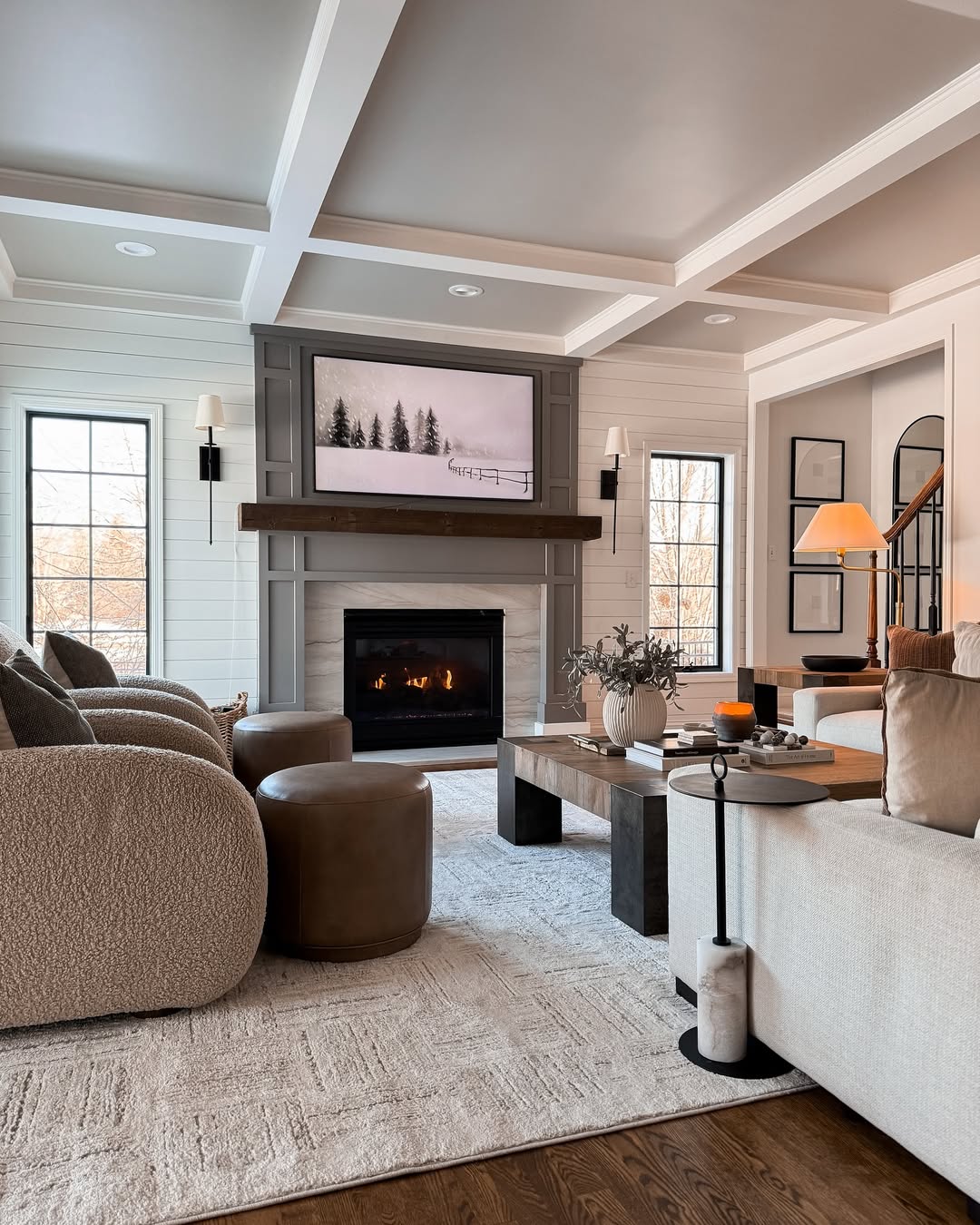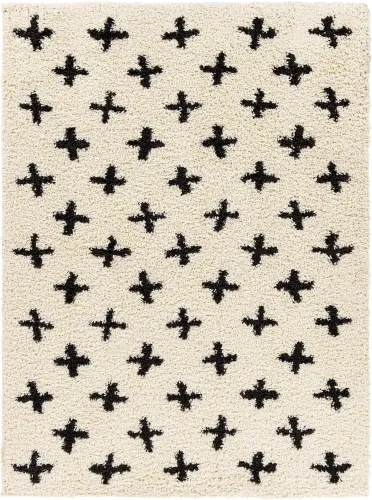Choosing A Rug: A Simple Guide
Choosing the Perfect Rug: A Step-by-Step Guide
Any interior designer will tell you that no room is complete without a rug (myself included). Rugs can make or break a room's design, but choosing one can be complicated - especially if you're only just getting started in the world of home decor. In this article, I will introduce you to everything you need to know to find the perfect rug!
Jump To:
What to Take into Consideration Before Buying a Rug
Before purchasing a rug, identify the purpose of the room where it will be placed. This is especially important, because depending on the room's traffic, aesthetics and functionality, you will pick your rug's material, pile length, size and design.
If you have pets or kids, you will likely want to choose rugs that are durable, have low pile and are easily maintained. The same applies for room with high traffic, such as the living room, kitchen and entryway. If you want to feel extra cozy in the living room or bedroom and don't mind higher maintenance, a high-pile rug can be the perfect choice for creating a warm and inviting space.
Size Matters
Start by considering your room's size and layout to determine if one larger rug or multiple smaller ones work best. When sizing an area rug, allow a 8 to 24 inch floor border on all sides. Make sure all furniture legs sit atop the rug. If not possible, front legs on and back legs off creates a pleasant balance. Avoid undersized rugs - they make rooms seem incomplete. When in doubt, always choose a larger size.
Photo by AshleyLynHome
For a perfect size fit, use tools like our free rug visualizer to see true-to-size rugs in your room with just a smartphone. This will both help you find the best size for your room as well as show how different designs can look in the room before you make a purchase decision.
Area rugs typically come in the following standard sizes:
- 6 x 9 feet
- 8 x 10 feet
- 9 x 12 feet
- 10 x 14 feet
Though these are standard dimensions, don't hesitate to customize proportions to best fit your living room layout. Rugs exist in multiple other sizes and can be styled differently depending on their size. Below you can find rug positioning ideas in living room depending on your couch design and rug size:
Choose the Right Fiber
From natural wools to easy-care synthetics, fiber characteristics and maintenance needs vary. Wool resists stains but costs more. Plant fibers like linen show wear, but cost less. Blends can be difficult to clean. For durability, indoor/outdoor synthetic rugs withstand spills and pets. Depending on your needs as well as the level of maintenance you're looking for, assess durability, softness and pricing to find the best fit.
What to consider when choosing a Rug material
Overview of Each Rug Material
- Wool: Natural wool rugs add soft warmth with stain resistance. The fiber is durable yet pricey, needing professional cleaning.
- Sisal and Jute: Made from smooth, durable plant fibers. Sisal wears well over time, jute feels softer underfoot. Neutral colorations can take dye overlays. Spot clean only.
- Cotton: Lightweight cotton flatweaves provide a casual vibe. Ideal for summer rooms, cotton can handle machine washing.
- Synthetics: Both easy-clean nylon and polyester offer fade and stain resistance. Though nylon wears longer, polyester comes in endless colorful patterns.
- Viscose: With its affordable sheen, rayon mimics silk and wool. But the fiber lacks the durability and stain protection ideal for high-traffic.
- Acrylic: Known for faux furs and hides, soft acrylic blends create style. This budget fiber's advantage lies in its ability to handle machine washing.
- Hides: Genuine cowhide makes an investment in long-wearing patterned durability. Resists dust, mold, and heavy soiling over its extensive lifespan. Plus, it can be passed down for generations to come!
Our 13 Favorite Cowhide Rugs:
Photo by El Peterson
Our 9 Recommended Wool Rugs that are durable and stain resistant:
Photo by @e.m.berggren
13 Best Sisal and Jute Rugs for texture and durability:
Photo by Kelsey McGregor
Favorite Cotton Rugs that are easy to clean, soft and affordable:
Photo by Sherri Calnan
Synthetic Rugs for durability and easy maintenance:
Get Creative with Layers
If you already own a smaller rug, don't rush to get rid of it. Create depth by layering rugs of varying shapes, sizes, textures and patterns. Balance an understated foundation rug topped with eye-catching accent pieces (such as cowhide rugs). You can also change it up during the different seasons of the year to refresh your seasonal decor.
Photo by Rill Architects
If you don't know where to start, try layering a neutral sisal rug with a fluffy shag rug on top during the winter months. An inexpensive sisal rug covering most of the floor paired with a plush rug on top (where people sit) is a cozy way to combine affordable decor and comfort. Plus this will create a texture interest in your space.
Then, transition to a lightweight cotton flatweave for a more breathable summer style. This innovative layering defines distinct zones while incorporating fun mixes of color, pattern and texture.
Mind the Details
Account for architectural elements before finalizing rug dimensions. Avoid covering vents. Check furniture placement to keep pathways accessible and prevent tipped end tables at rug edges. Center floating rugs can seem adrift - anchor them under seating areas instead.
Photo by Chelsey Freng
Plain or Patterned?
In urban interiors, make a bold statement with an ornate antique or graphic rug. For laidback spaces, natural fiber rugs like jute offer casual chic. As a middle ground, try sisals with subtle stripes dressed up with leather bindings. Use patterns to add an interesting touch to neutral spaces. Dark hues are great for disguising dirt in high-traffic areas (think entryways, hallsways and kitchens). Neutral solids blend into bold, eclectic rooms.
Photo by Alvin Wayne
Our Favorite Area Rugs:
An area rug's color and pattern dramatically impact a room. Play up neutrals with vivid designs, allowing the rug to shine. Contrast brightly patterned décor with solid toned rugs to avoid visual chaos. Try pulling one or two existing room colors into the rug’s palette for a unified aesthetic. Coordinate the area rug’s style with both the flooring and furnishings to harmoniously elevate the whole space.
Finally, Add a Rug Pad
A high-quality nonslip rug pad is an essential addition to any area rug, providing both practicality and longevity. By securing a pad that is slightly smaller than your rug, you can effectively prevent unwanted shifting and sliding, reducing the risk of slips and trips. This added stability is especially important in high-traffic areas or homes with children and pets.
Rug Pads to Choose From:
Beyond safety, a rug pad plays a crucial role in preserving the life of your rug. It acts as a protective barrier between the rug and the floor, reducing friction and preventing premature wear and tear. Over time, this helps maintain the rug’s shape, texture, and vibrancy, ensuring that your investment remains in excellent condition for years to come.
Final Thoughts
Photo by Rugs USA
Selecting the perfect rug can significantly enhance the comfort and aesthetic appeal of your space. When choosing a rug, consider such aspects like the rug’s size and room’s dimensions, furniture layout, style and pattern. Also think about materials – wool is more stain-resistant while plant fibers tend to be more budget-friendly.
Regardless of your chosen rug size, focus on elevating the space with an area rug to create a warm, inviting and cozy space. In addition to that, utilize DressMyCrib’s rug visualizer to try different rug styles, patterns or sizes before making your final decision.
Best Area Rugs To Style in Your Home Decor







































